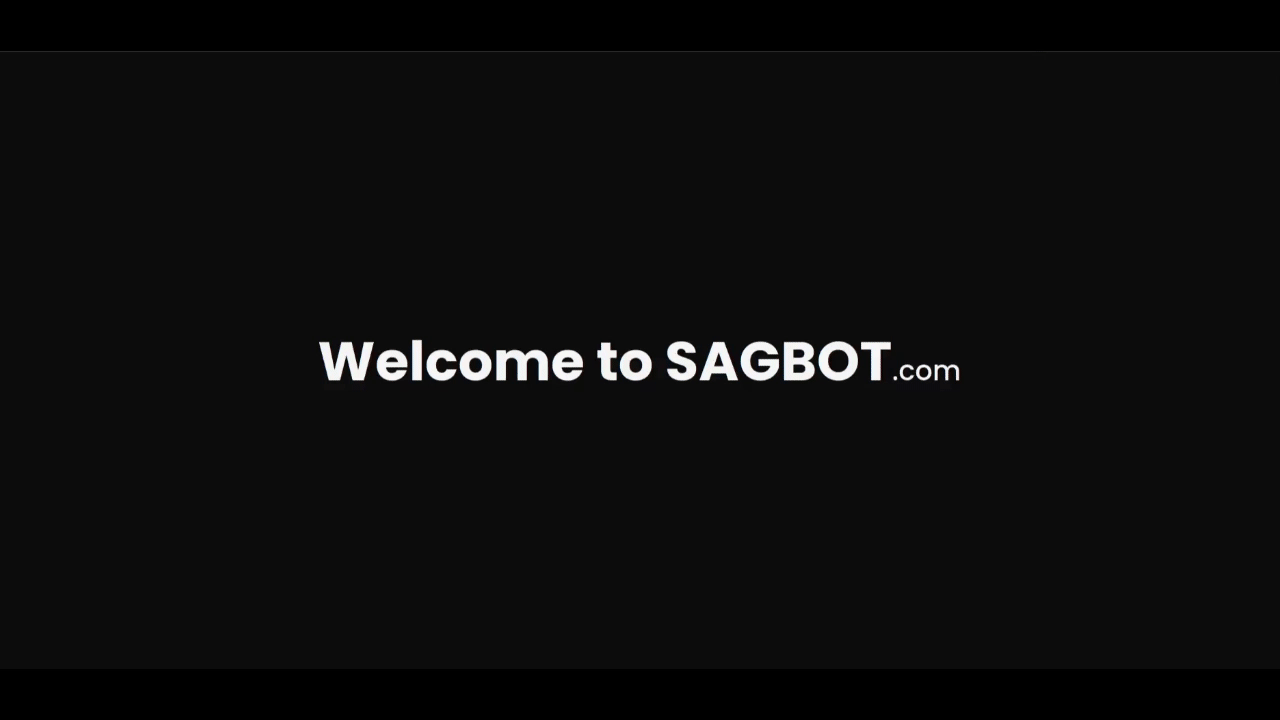SAGBOT.com

SAGBOT.com history#
SAGBOT.com was launched at the end of 2021. Since its launch, the site has undergone numerous visual evolutions, each marked by frequent updates. However, one common thread runs through all these changes: the project has never been completely finished. Often, I lacked the motivation to work on the front-end, not really having the soul of an artist, nor the pen of a writer, I didn’t know what to write to enrich the content.
The old versions were essentially made with HTML/CSS/PHP/JS and were often single-page websites (SPA). And as I said before, they were frequently empty of content, or even still contained fillers (placeholder) and even in the worst case links leading to 404 pages, because they weren’t coded yet.
It got to the point where for months SAGBOT.com (before finally making this website) looked like this, just a black page with a simple « Welcome to SAGBOT.com » and a little animation that makes the text move.

Current version#
The current version is no longer based on the same technologies and has no longer the same purpose. As the SAGBOT project has evolved and become more personal, SAGBOT.com has become a personal website. At present, it’s becoming a blog where I’ll be posting articles on IT or even the evolution of the project, like this one.
Design#
First of all, I have to ask myself « How do I want SAGBOT.com to be? ». After some thought, and even discussion with friends, I came to the conclusion that SAGBOT.com should become a blog about my passion; computing, to be more in line with my career plan, which is to become a teacher-researcher (see About). Given that in the world of research, article writing is commonplace.
Once I had the subject, it was time to put it into shape. First of all, the monopage was a thing of the past, as it was incompatible with the idea of a blog. The writing had to be simple to implement. Having to recode a HTML page for each article would have been a hindrance, and the site would have ended up like the others, empty. Having mastered LaTeX and Markdown, and knowing the power of their syntaxes, I wanted to create articles using these languages.
One of the greatest advantages of LaTeX is the freedom it gives you, as well as the numerous packages enabling customized page layout (Tikz, etc.). Unfortunately, this advantage can become a drawback, complicating the compatibility of all packages in a HTML page generator. For these reasons, I’ve chosen to use Markdown.
Being an admirer of the Rust programming language, I initially wanted to make this site with one of the following libraries: markdown-rs, mdx-rs. When I asked about MDX, it seemed the perfect candidate for making the articles, as this Markdown format allows you to use JS/JSX in a Markdown document. However, in discussions with friends who also have websites, they advised me not to use MDX, but instead to use Markdown-based website builder tools such as Hugo or Zola. They were much more suited to my needs, and I didn’t even have to redo the whole thing. One of my friend even had a website created with Hugo and was very happy with it.
After reading the documentation for both tools, Hugo seemed simpler and more in tune with what I wanted to do. That’s why I ended up using Hugo. As mentioned at the beginning of this article, I’m not an artist, so I use a Hugo Terminal theme made by panr and made available to everyone, with colors generated by the Terminal.css tool.
Articles#
As I said before, the articles that will appear on SAGBOT.com will be about computing, and will cover a wide range of topics that I like. The aim will be to write articles from time to time, in the hope that people will find them interesting. To make these articles accessible, they will all be translated into English, as this is an international language.
Conclusion#
The creation of SAGBOT.com has been a common thread ever since I discovered computing. Throughout my learning process, whether academic or self-taught. I’ve tried to bring every bit of knowledge to life on this site.
Adopting Hugo as my website generator was an important decision, facilitating article management and ensuring scalability. This transition underlines the importance of choosing the right tools for a long-term project vision. Finally, the integration of themes gave SAGBOT.com a visual identity, despite my self-perceived lack of artistic ability.
In the future, SAGBOT.com will continue to grow as a resource dedicated to computing and the evolution of my larger SAGBOT project. I’m excited to share more knowledge, thoughts and discoveries with an audience.
I’m grateful for the support and advice received throughout development, which has been instrumental in overcoming obstacles and bringing this project to fruition.
Now all I have to do is write articles!
Thank you#
I would like to thank T. RENAUX VERDIERE and Mirabelle S. P. for their advice throughout the research and creation of this website. Special thanks to T. RENAUX VERDIERE and Jade P. for proofreading this article and the other pages of the website.